Age of Myth
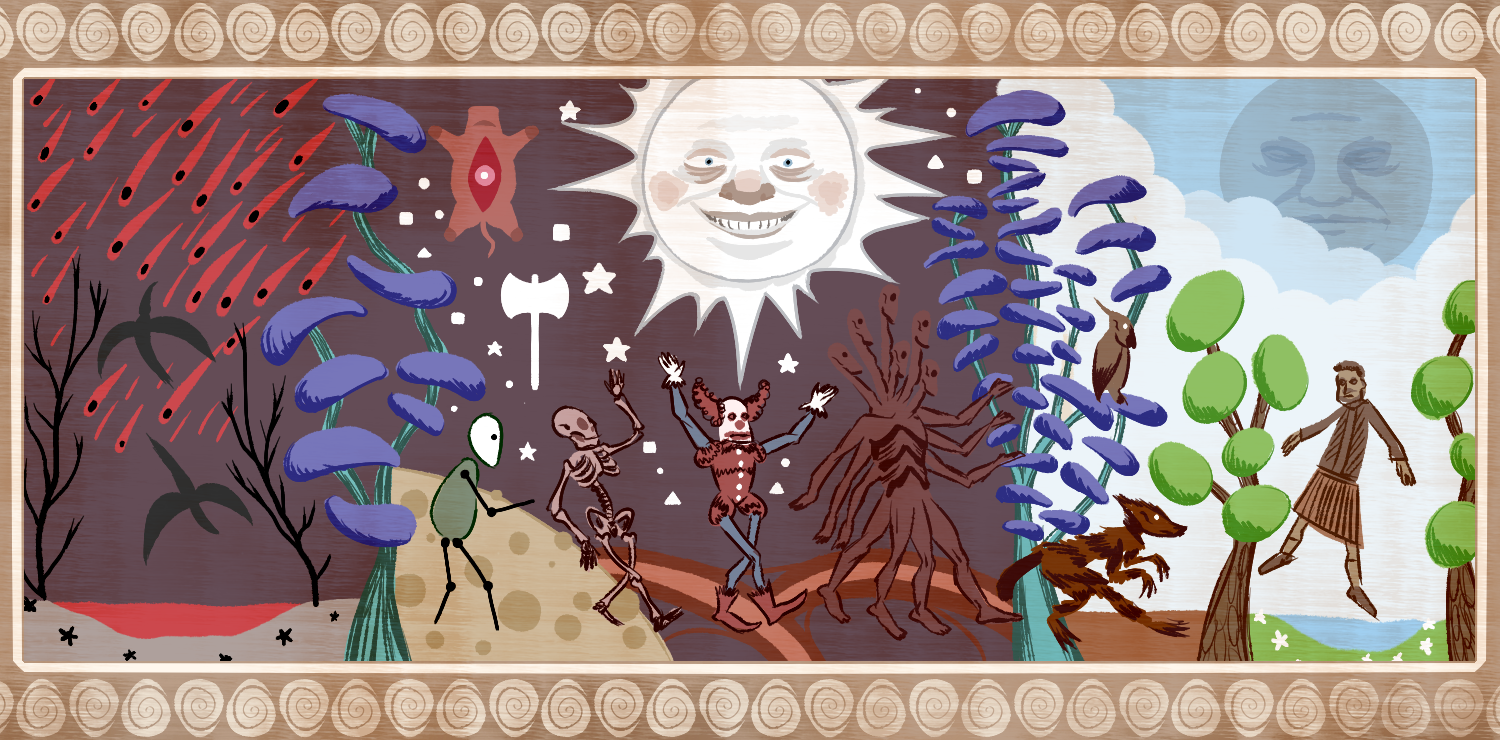
Specific religions suggested that the Earth was created by a careless god, one who didn’t create the dominant species in his image, one who wanted to see who would come out on top.
Man triumphed on top thanks to dexterity and determination. To truly test and bear witness to those qualities, this god tested Man in a trial that lasted a full week, failure to do so bringing forth an endless sea of cataclysm.
In those trials, Man was subjected to unearthly disciples of this god, bearing mocking avatars of Man. The current list of each disciple, according to many retellings, are:
- A Man simplified
- The living cadaver of Man
- A Man with pulsating red qualities, now commonly interpreted to be a jester
- Multiple Man stitched together
- A Man crossed with a live animal
- A beast with the intelligence of Man
The former two on the list are often used interchangeably, some retellings even combining the two.
The Week Trial, as it is known, is a popular Creation Myth that explains why a week consists of 7 days and reinforces the qualities of Man, possible of triumphing God himself. The story has been a popular source of adaptations due to the outlandish descriptions of the trials, giving way to many artists giving their own interpretation of events in theatres, movies, and even games.
1963
In 1963, Charlie Emily was born to Henry and Jane Emily. Henry worked as an Imagineer at Walt Disney Imagineering Research & Development. Henry met Jane while at the park in 1960 and the two married in 1962.
In that same year – 1963 – Elizabeth Afton was born to William and Harlet Afton. William graduated as an urban planner in 1957 and gained the affection of Harlet at the unveiling ceremony of the first Mini motor car.
William always had a fascination for sci-fi literature, his favorite story being Theodore Sturgeon’s novella “Baby is Three”. Namely, the concept of collecting multiple entities to create a computer-like human. For now, robotic automatons were the closest thing to that concept. Reading about the promised attraction at the New York World’s Fair being exactly that, William Afton traveled to the United States to check out the performance.
New York World’s Fair (1964)
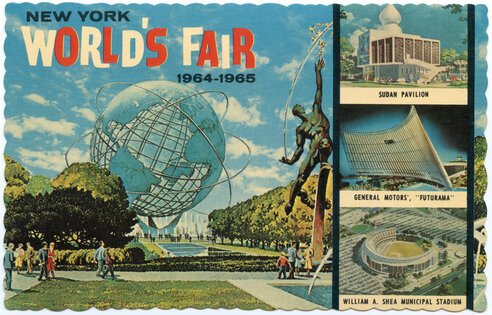
“The biggest”, they say, “the most beautiful”, “the most awe-inspiring”, “the most colorful”, “the most spectacular event of this era.” The 1964-1965 New York World’s Fair opened in April 1964 on its first season and closed in October 1965 on its second season. Most popular was Illinois Pavilion’s Audio-Animatronic of Abraham Lincoln, proven so successful that Audio-Animatronics were implemented in the Disney parks during and after the World’s Fair.
It was only thanks to the help of Imagineers led by James Algar that Bob Gurr, Roger Broggie, Henry Emily, Sam McKim, and Marc Davis were able to fast-track and complete the Lincoln “Animatronic”, from the words ‘animation’ and ‘electronics’. Despite the animatronic already being completed and capable of speaking to the people thanks to the voice of veteran actor Paul Vrees, Walt Disney, with enough time left, asked if it were possible for the Lincoln animatronic to move around.
A separate animatronic would then be built dedicated to full mobility. Despite all attempts, the animatronic would break down or fall over. Imagineers attempted a variety of solutions to try and circumvent the issues. Attaching small wheels under the animatronic drew comparisons akin to him moving like a “specter seeking vengeance”, and moving all weight to his legs either caused the top of his body to break down in aftershock or the weight of each stomp created such a large sound that it unnerved test audiences. Ultimately, the non-mobile Lincoln was used at the World’s Fair, but Walt Disney saw potential in the mobile animatronic–it just needed more time.
William Afton had also been attending the World’s Fair and witnessed the animatronic, seeing the potential in it. Walt was busy, so William talked with the Imagineers behind the project, especially hitting it off with Henry Emily. What was talked about still remains unknown, but Henry Emily left the meeting convinced to create a diner venue with William. Newspaper interviews with Henry Emily during the opening of Fredbear’s Family Diner called William a “convincing man.”
Fredbear’s Family Diner (1969)

Fredbear’s Family Diner opened in 1969 to great success. Designed as both a diner and entertainment venue, kids could enjoy the colorful duo of Fredbear Fazbear and Bellonny Bunbun while parents could enjoy drinking enough alcohol to also enjoy the yellow duo. The animatronics were designed by Henry Emily to function both as “Portrait Animatronics” and “Mobile Animatronics”, both easily able to be slotted in and out via the sharp pins and holes of the animatronic body and legs respectively.
Hanna-Barbera, already producing more than enough shows, achieved television rights of the Fazbear brand and produced the Saturday-morning cartoon "The Fazbear Gang", which ran for 28 episodes and brought more attention to the location. The characters Freddy, Bonnie, Chica, and Foxy were created by the show and proved popular enough to be later implemented as Mobile-only animatronics in a number of locations. The success of the brand rose enough for both Henry and William to be happy for their partnership.
In late October of that same year, Charlie Emily was tragically murdered in front of one of the locations. Authorities never found the culprit behind the drive-by stabbing. The death of his daughter turned Henry Emily reclusive, nearly assaulting any journalist who tried bringing up the incident. Because of that, William Afton would be the only source able to give the word out about Henry’s state. “He used to be the brightest bulb in the room,” William described. “He’s just not the same Henry Emily I used to shake hands with anymore.”
Circus Baby’s Pizza World (1974)
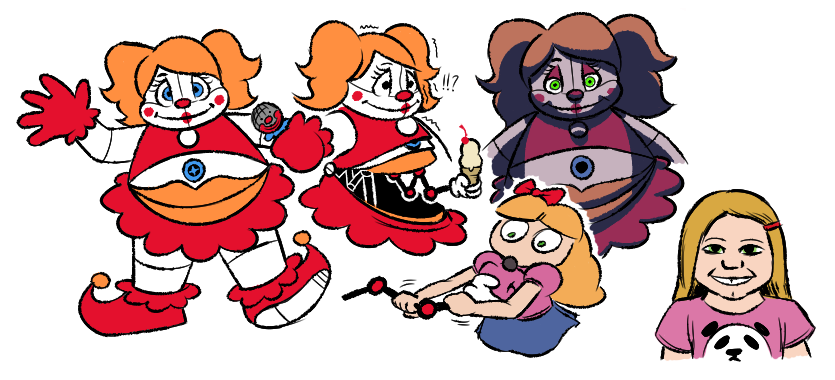
In a meeting with shareholders, William Afton unveiled the “Funamatronics”, an innovative new animatronic performing a wide array of performances through the many plates spread across their bodies. Emitting smoke at their heel areas, serving ice cream, and a helium tank for inflating balloons were part of the list of abilities the funamatronics were capable of. Despite concerns raised on the design choices of the funamatronics, William Afton received the funding to construct Circus Baby’s Party World, featuring the star actor Circus Baby.
During the opening day of the location, everyone inside Circus Baby’s Party World had to be evacuated immediately following William Afton’s claim of a gas leak. The weeks that followed were an extensive emptying of the building. According to people who lived close by, every night a truck would stop before hauling away huge crates. The building turned into a vacant lot soon after.
The claim of a gas leak causing such an abrupt cancelation created a lot of doubt, and people could soon link the closure of the building with the sudden disappearance of William’s daughter Elizabeth Afton.
Bite of '83 (1983)
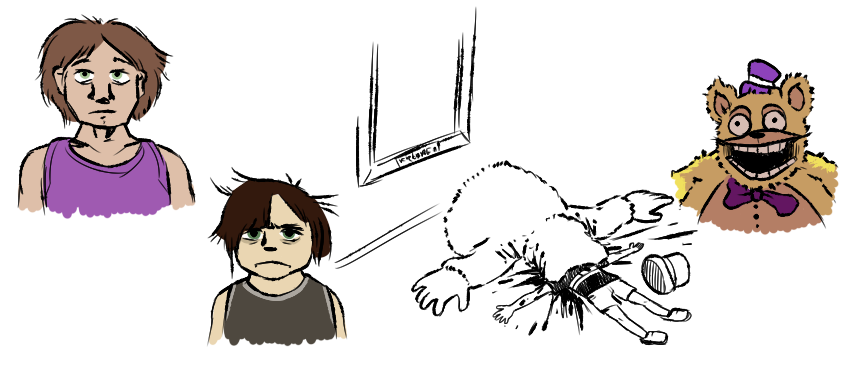
As if tragedy couldn’t fall on the founders any more, the youngest Afton son fell into a coma on his own birthday. The heavy blood on the Fredbear animatronic and floor suggested that the son was forced into the jaws of Fredbear while it was performing as a Portrait Animatronic. The counterweight resulted in the animatronic falling on top of him, crushing his skull and landing him in the hospital.
Life support only lasted for a couple of years, with the son pronounced brain dead only a few days after another incident that happened at the rebranding that had happened weeks after the incident.
Freddy Fazbear’s Pizza I (1983)

Fredbear’s Family Diner closed after the biting incident, and weeks later Fazbear Entertainment rebranded as Freddy Fazbear’s Pizza. Described as a magical place for kids and grown-ups alike, Freddy’s was more kid-oriented with the menu picks reflecting the rebranding the most. William Afton hosted the grand opening, looking visibly unbothered with the hospitalization of his youngest son only weeks prior. Adding on to that, William continued his “Mr. Afton” persona well after the disappearance of his daughter. Comparisons to the now-reclusive Henry Emily were made, though William refused to comment on the contrast.
On the night of June 26th, 1985, five children were lured into the location’s backrooms by an unknown man wearing the mascot costume of Bellonny Bunbun. Susie Patricia, Fritz Michael, Gabriel Sunderland, Jeremy Lake, and Cassidy Haley were declared missing and soon presumed dead. Despite being apprehended and held in police custody, authorities were unable to link William Afton to the murders, though he was still held in for questioning. To further not ruin the Freddy’s brand, William Afton was let go as co-director of the Freddy’s brand, leaving Henry Emily as the sole head of the IP.
After the murders, Freddy’s fell into disrepair. According to several interviews, the animatronics locked up on several instances due to faulty ventilation heating their servos. Patrons felt discomfort when they heard piercing wet squelches coming out of the animatronics, days later a rotting odor permeated throughout the building causing many parents to abruptly leave the restaurant with their kids.
It was clear to Fazbear Entertainment that Freddy needed another rebrand, with redesigns that would resonate with audiences and a more friendly atmosphere.
Freddy Fazbear’s Pizza II (1987)

Freddy Fazbear’s Pizza reopened in 1987 with revamped plastic-looking characters meant to reflect the current times and standards of the ‘80s thanks to the newly-hired Character Team. For instance, Foxy has been replaced by the controversially stereotypical ‘Funtime Foxy’ from the Hanna-Barbera days. And Chica, who used to promote unhealthy eating, now promotes unhealthy fasting.
Being a more scaled-down version of the “Funamatronics”, lacking any of the unique plates yet keeping a plastic appearance, one of the planned features, that being able to identify profiled criminals, was the only feature implemented into the unofficially called “Toy Animatronics.”
Despite the rebrand and technology, the string of murders couldn’t escape the brand. Not long after its grand opening, five more children were found murdered inside the location. Daniel Blake, Anna Wonder, Simon Anderson, James Philips, and Cesar Sunder were found spread out across the restaurant. Being the only person last seen inside the restaurant, Henry Emily was charged and imprisoned for the five murders. With authorities linking Henry to the previous incidents, William Afton was set free, yet public perception around him gave Fazbear Entertainment enough cold feet to not rehire him as the main director.
Without any of the original owners being at the helm of Freddy’s, one of the members of the Character Team would be set in charge of overseeing the Freddy’s IP brand. Instead of assuring the facial recognition software was up-to-date or rebranding, their first order of business was to make each of the Freddy’s characters have a catchphrase, feeling that Chica’s “Let’s Eat” catchphrase needed to be extended to everyone.
In November of that same year, on closing day, another bite-related accident occurred at someone’s birthday party. Despite heavy damage to the frontal lobe, the victim survived, though sued the Freddy’s location for the dangerous animatronics. In response to the lawsuit, the free-roam technology on the animatronics were indefinitely shut down to prevent another incident similar from occurring again.
In likely retaliation to the incidents, the Toy Animatronics were found dismembered and irreparably destroyed, Fazbear Entertainment admitted to not being responsible for their destruction. Nonetheless, that only left the original animatronics functioning for the next rebranding.
Freddy Fazbear’s Pizza III (1988)
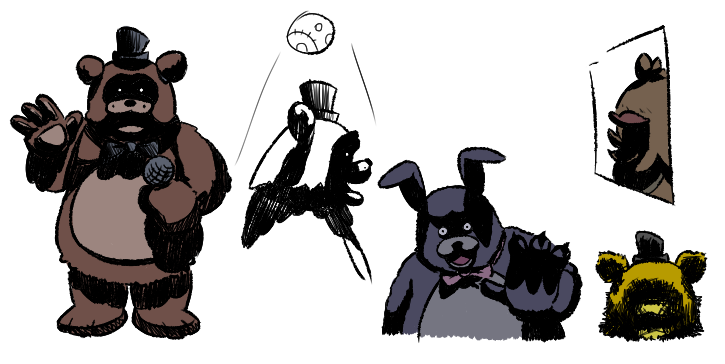
Freddy Fazbear’s Pizza reopened in 1988 under a smaller budget. The old animatronics were reused along with the older locations, smell and all. While the first location had already seen a fair amount of reports about paranormal incidents, the reopening of this old location saw these reports triple in size. Seeing more children inside the restaurant than exiting, random slices of pizza tasting colder than the rest of the pizza, and screaming heard from the “safe rooms” that had been sealed up since the 1985 murders.
Most infamously of this location would be the repeated disappearances of those applying for the night watchman position. Despite attempts to explain the missing night guards or settle them off with a hefty sum of money, the families of the victims were not happy and demanded to see their family members return.
Circus Baby’s Entertainment and Rental

The closure of Circus Baby’s Pizza World forced all assets to be moved to underground storage. For now, Circus Baby could only be rented, though listing records show she had never been rented for any purposes. The subsequent imprisonment of head founder William Afton also didn’t help motivate parents to seek out renting the animatronic.
The closure of Freddy’s in 1987 led to the development and introduction of many more Funamatronics. Ballora and her Minireenas, Funtime Freddy and his handpuppet Bon-Bon, Funtime Foxy, Funtime Chica, and Circus Baby’s pals the Bidybabs. Most of the characters were originally from the "The Fazbear Gang" tv-show, though some characters like Ballora and the Bidybabs were original creatiions.
Mysteriously, the closure of Freddy’s in 1989 also led to the closure of Circus Baby’s. Naturally, the fact that not one record that the animatronics had been rented before would explain the closure of this unprofitable venture, but the truth is more complicated once you read the circumstances behind it.
Multiple important figures and assets disappeared around the same time. Within the Afton family, both William and his sole surviving son Michael Afton had disappeared, the latter last being registered as an employee at Circus Baby’s soon before his disappearance. While the shells of the Funtimes remained, the internal wiring and components disappeared along with a massive wet stain of blood in one of the rooms, modern forensics saying it belonged to Michael Afton. At Freddy Fazbear’s, weeks after closure, all of the animatronics inside were found dismembered and destroyed.
The week before Michael Afton fully disappeared, people found the man sickly green. Bulbous growths shifting around his body, moving erratically and unsure of himself, yet calmly looking at anyone who got close to him. According to others, they refused to come near him. The growing stories surrounding Freddy’s and the Afton family were coated in blood and nobody wanted to entertain their survival by approaching him. Michael finally disappeared after that.
Fazbear’s Fright (2022)
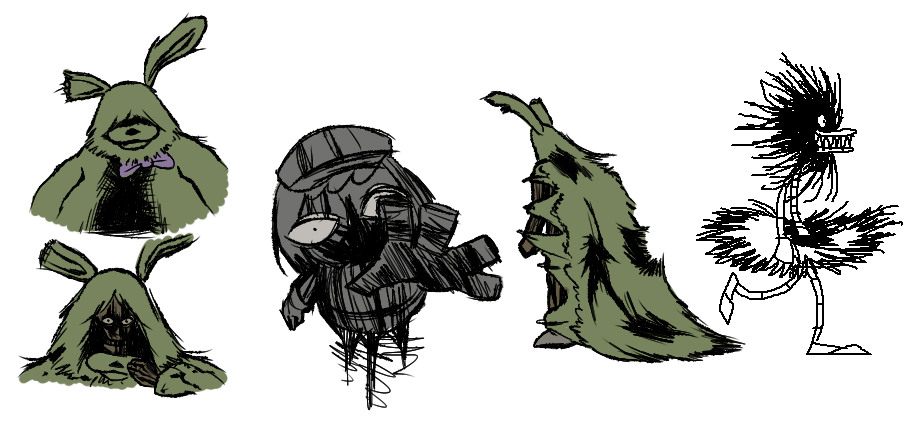
Seeking to profit off of ‘80s nostalgia, Warner Bros. Entertainment bought the license to Freddy’s to produce “Five Nights at Freddy’s,” a slasher movie exploiting the real-life tragedies that had happened across all the locations. Already comfortable exploiting the real-life Bathsheba Sherman into a baby-sacrificing Satanist in their Conjuring franchise, the studio experimented by exploiting the murders while the victim’s parents were still alive.
The movie saw a huge financial success, which led to many theme parks wishing to purchase the ride rights to write a ride. SeaWorld won out in the end, which led to the construction of Fazbear’s Fright at SeaWorld San Antonio. An anonymous party suggested the usage of real-life abandoned Freddy’s assets to help “enhance the experience.” Further donations from the anonymous source helped motivate the attraction designers to make the trip to Utah to excavate the property for anything of use.
Immediately after excavating thanks to the advice of the anonymous source, marketing shifted instantly to get customers hooked: a real vintage animatronic had been found, all the way back from Fredbear’s Family Diner. In some premature excitement for the finding, development of the attraction was rushed which led to the unfortunate fire of the building due to faulty wiring. Most of the assets were left irreparable when the damage was done, and the old Bellonny Bunbun animatronic had been reported missing, some theorizing it had either been stolen or turned unrecognizable.
Freddy’s Pizza (2023)

The Freddy’s IP was bought by an unknown party who thought it’d be best to focus on advertising rather than actually creating the restaurant. Poster and billboard ads specifically advertised how many children could fit inside the, rather small, location in Utah. This was made fun of, a lot, on social media–the SpongeBob SquarePants “Krabbyland” clip was played so many times it almost became synonymous with the location.
Just like Fazbear’s Fright before, a giant fire broke out inside the location, though this time the reasons behind it are and stay unknown till this day. The amount of fire forced authorities to only be able to avoid letting the fire spread out and let everything inside burn out. It took around 3 days for the fire to fully subsume and let firefighters inside the building.
Three unrecognizable corpses were found

POPGOES (2024)

A year after the dramatic fire that ended Freddy’s, Popgoes’ Pizzeria opened under the sole owner Fritz Glade. As one of Fredbear’s Family Diner’s earliest employees, Jeremy Fitzgerald was Henry Emily’s most prized worker, the two often worked maintenance on the animatronics caused Jeremy to learn a lot under him. Henry was a kind soul, allowing the young kid shelter when bullied under allegations that his older brother, Simon Fitzgerald, caused the disappearance of several kids around his school.
When Henry got arrested, Jeremy continued working at Freddy’s, though under the night watchman position. There, the initial pressure and bullying from others, plus the malfunctioning robots hunting him down, led Jeremy to see things that weren’t there. Shadowy and color-shifted figures haunted his shift, though it all went away in one swift bite. Jeremy survived, though now he’s just an added controversy to Freddy’s growing record, and the initial schoolyard rumors about his brother have turned into a full-fledged police investigation.
Under witness protection, the Fitzgerald family moved to England where Jeremy got renamed Fritz Glade. In the land of tea and biscuits, he could fully grow up and hone his skills in robotics without any pressure crushing him down, earning him some nice cash. When the auction for any surviving Freddy’s assets were announced, Fritz bought the prized creations of Henry and sought to create his own pizzeria in honor of his late teacher. Subconscious trauma led Fritz to develop the pizzeria without hiring any employees–preferring to use the animatronic’s sophisticated adapting AI to run the location themselves instead of any potential pressure from human employees.
Fritz’ daughter, Bonnie Glade, was brutally murdered by his father when she triggered his trauma with the auctioned-off Bonnie mask. To hide all evidence, Bonnie was buried deep within the forests under the alibi of her wandering off during a hunting trip. Witnessing all the curious animals staring at his crime, Fritz would project their judging stares with their animatronic counterparts. A month after the cover-up, Fritz was found dead from suicide when the pressure of what he had done couldn’t be healed anymore.
Five Nights at Candy’s
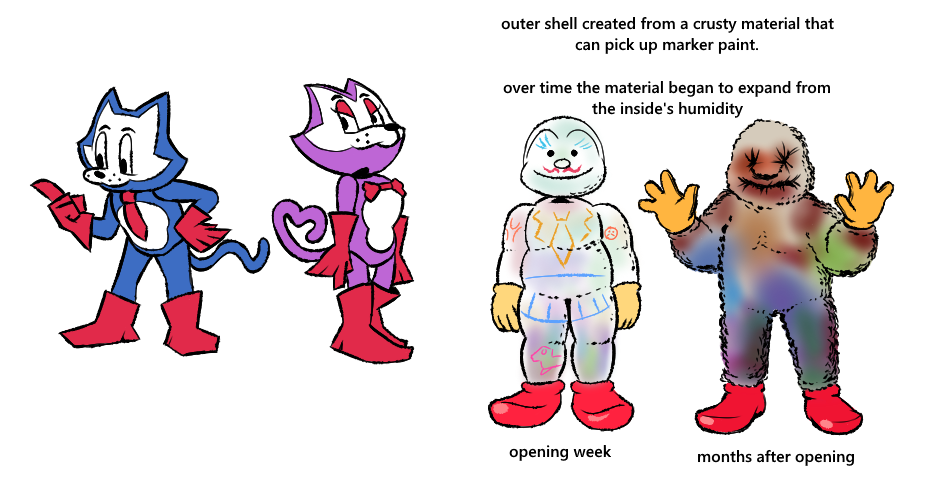
Freddy’s closure in 1989 left the only animatronic-based entertainment restaurant in the country, Candy’s Burger & Fries, to rise in sales numbers. Though this success isn’t laced without tragedy.
In October of 1961, the Rat & Cat Theater closed after its two star actors were found dead from asphyxiation inside their Randy the Rat and Candy the Cat mascot suits. The only witness to the crime, Mary Schmidt, was able to give testimony that would incriminate Vinnie Gale for the death of his co-stars. The premature grand reopening of the Theater in 1962, featuring shoddy animatronic replicas of Randy & Candy in conjunction with the recently-founded Rowboatics Corp., went awry when the Rat animatronic nearly fatally harmed a child. With the Theater permanently closed and under new ownership of CTC Entertainment in 1964, Candy’s Burger & Fries opened which promised a safer environment for everyone.
A pair of twins did ultimately succumb in 1987 when two kids were found mangled inside the Rowboatics Corp. Factory assembly line. Trust in Rowboatics Corp. suffered an even larger hit in that same year when the Candy the Cat animatronic assaulted a man. CTC Entertainment promised that this incident wouldn’t happen again and decided to scrap the old Candy animatronic with a short, stockier version along with introducing his sister, Cindy the Cat.
Operations resumed, though trust waned when one of the night guards disappeared in that same year. Finally, Candy’s was forced to shut down following the death of another night guard in 1993, blame placed on the malfunctioning animatronics. What finally sealed Candy’s exit would be the massive fire at the Rowboatics Corp. factory in 2007 which stored all all Candy’s assets inside..
Freddy’s Plus

Freddy’s Plus was an initiative back in the early 2000s for entrepreneurs outside of Fazbear Entertainment to open their own Freddy Fazbear’s Pizza. These entrepreneurs had complete freedom to introduce their own designs for Freddy’s characters and even introduce new characters to the band, most infamously being Fetch the Dog.
Disaster struck almost immediately when allowing complete outsiders to work on your IP without any creative guidance. While some tried sticking to their own interpretation of Freddy’s, others decided to lean into the haunted rumors surrounding the locations, even forcing a scary design onto the Freddy’s characters. Some location owners were even fighting amongst themselves based on accusations of plagiarism because of similarities between the shades of brown of their Freddy Fazbears. Others used this opportunity to prop up their own characters; one owner decided to scrap the entire Fazbear gang and introduced “Axis the Axolotl” in the inappropriately named “The Axis Club.”
The Freddy’s Plus initiative shut down when the 2010s rolled around.